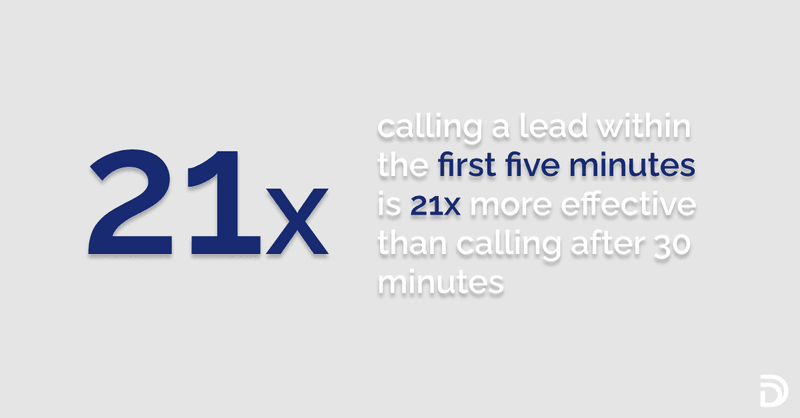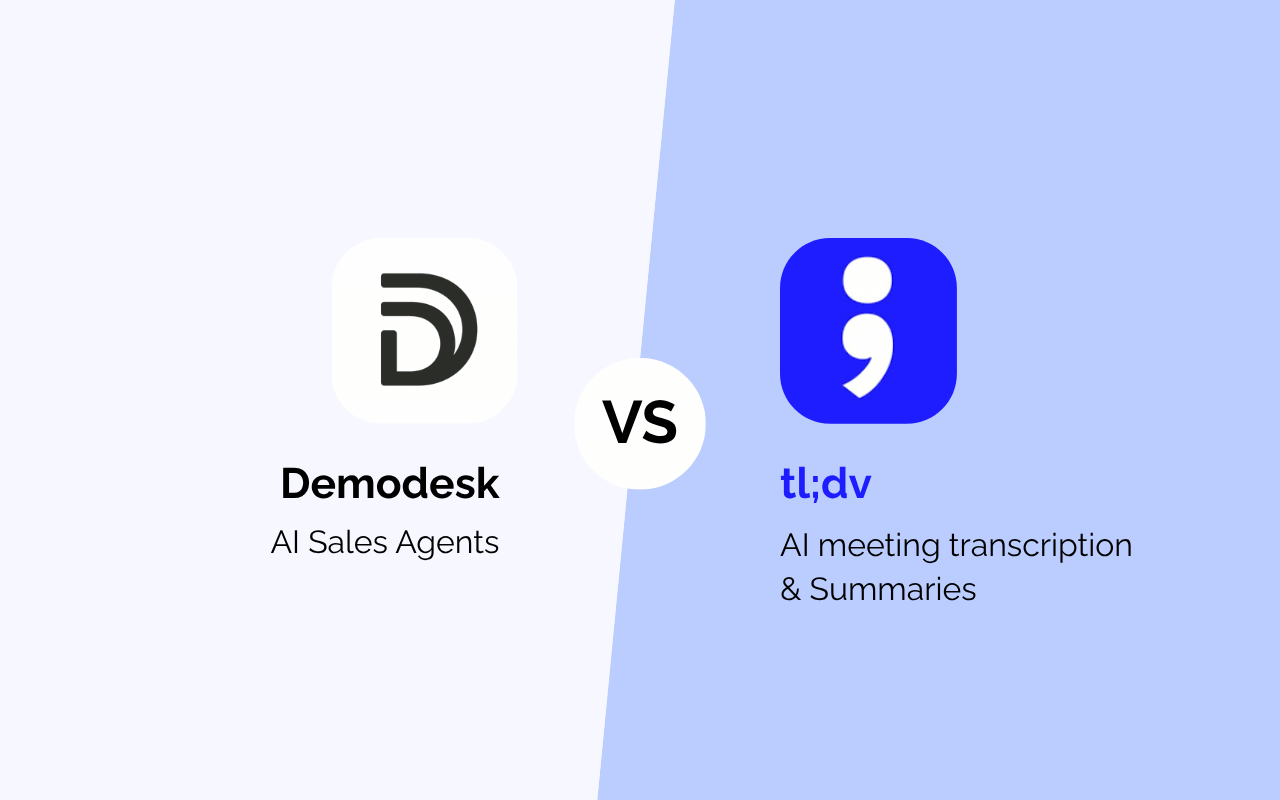What is speed to lead?
Speed to lead refers to the amount of time it takes for your organization to respond to a prospect who makes an inquiry about your product. For example, when a prospect fills out a contact form or makes a demo request.
If the average amount of time it takes for a sales rep to respond to a prospect is one hour, then you can say that your speed to lead is one hour.
Why speed to lead matters?
Did you know that 78% of customers buy from the company that responds to them first?
This clearly indicates that your speed to lead time is essential to the overall success of your business.
However, according to a Harvard Business Review study of over 2,200 U.S. companies, 24% of businesses took more than 24 hours to respond. Even worse —23% of companies never responded at all!
Having a good lead response time is crucial because the moment your prospect reaches out is when their interest in your product is at its peak. And the longer they need to wait to hear back from you, the more they lose interest. Or worse, go to your competitor!
So optimizing speed to lead and improving your lead response management is absolutely critical in order to reach inbound leads faster and improve conversions.

In this blog post, we'll reveal the secrets to improving your speed to lead by addressing these key topics:
- Ways to improve your speed to lead
- Common challenges with inadequate speed to lead
- Assessing your lead response system
- Rebuilding & automating your lead response system
- Additional aspects to improving your system
Let's dive in.
Ways to improve your speed to lead
One of the most effective ways to improve speed to lead is by utilizing automation. Because lead conversions are 391% higher when prospects get a response within one minute of making an inquiry!

Which sounds great, but consistently responding within a 1-minute time frame is pretty much impossible for anyone to maintain. This is where scheduling automation comes in.
By automating scheduling, this time frame becomes far more plausible and sustainable.
Your prospects get the satisfaction of scheduling a meeting within seconds, which improves their customer experience. And it cuts down on lead response times, which increases your chances of converting leads into paying customers.

Here are some ways that automation can improve your speed to lead:
- Processing leads
Processing inbound leads can be tedious and prone to human error. With automation, processing leads becomes standardized with lightning quick speed. This improves the effectiveness, accuracy, and scalability of processing leads. - Response times
Without automation, it can take hours —if not days — for sales reps to follow up on new leads. If the first step in your sales cycle is unnecessarily labor-intensive, your entire sales cycle gets slowed down. To ensure that your sales reps contact leads in a timely manner, use automation to qualify and route leads directly to your reps. - Drop off points
There are several points throughout the sales cycle where prospects can drop off. Sometimes it's because they aren't a good fit. But other times it's due to completely avoidable reasons like slow response times. Automating scheduling tasks cuts down on lead response times, which can improve conversion rates.

Before integrating any scheduling automation software, you should take the time to understand the specific areas that need to be improved in your sales cycle. Doing so will enable you to focus on integrating only the automation that will actually help you improve speed to lead and enhance your operation.
Common challenges with inadequate speed to lead
Every sales team has a different sales cycle with varied processes. However, it's often the case that they end up facing similar challenges when it comes to lead response time. If some of these issues sound familiar to you, inadequate speed to lead could be the cause:
- Loss in opportunities
An inefficient and error-prone lead response system can result in the loss of potential customers and opportunities. If your process is not predictable or consistent, then you're more likely to lose business in the long term. - Not scalable for growth
One of the most important aspects of scaling sales teams and revenue motions is ensuring that your processes are reproducible and sustainable. Processes that are manual and tedious are less likely to stand the test of time. - Inconsistent lead assignment
Manually assigning new leads to the right sales reps is not only time-consuming, but also prone to human error. This can result in leads getting assigned to the wrong reps and cause frustration on your team.
These are just a few of the most common challenges that may result from an inefficient lead response system or inadequate speed to lead.
Assessing your lead response system
The first step to solving a problem in your lead response system is understanding what isn't working. Utilize lead statistics and ask for feedback from your sales reps to critically assess your current structure.
This will allow you to hone in on your team's specific pain points.
Analyze your lead statistics
Review your internal system and highlight the specific barriers for your sales team. This includes assessing your sales productivity numbers, KPIs, and YOY revenue data.
You may uncover that your sales reps respond to inbound leads too slowly. Or it may be the case that you don't have enough qualified leads in your sales funnel.
In such cases, it may be worthwhile to automate lead routing to increase your speed to lead. Or it might make sense to implement automated lead scoring to help you qualify your leads before they enter your funnel.

Assess your lead speed
A sales rep would ideally be able to connect with and follow up on a qualified inbound lead within the first five minutes of their inquiry. Doing so greatly increases the likelihood of the lead converting.
This likelihood drops with each minute that passes without a response.
Speed to lead statistics actually show that calling a lead within the first five minutes is 21x more effective than calling after 30 minutes. That's a huge jump for a difference of only 25 minutes!

A delayed response time can also have a huge impact on your overall business.
When too much time passes, prospects end up losing interest in your product. And it's very likely that they will end up turning to your competitors instead if they offer a faster response time.
Pinpoint other roadblocks
When reviewing your lead response time for areas of improvement, take note of any obstacles that may be impacting your speed to lead time. Specifically, the areas where you are losing valuable time connecting with your leads.
Possible roadblocks that may be present in your system include:
- Inaccurate information
All lead information should be input into your CRM and kept up-to-date. Doing this manually is not only tedious, but also prone to human error. This can result in delayed and inaccurate information. - Duplicate leads
In order to maintain good data hygiene, it's important to avoid having duplicate leads and accounts in your CRM. This means that sales reps need to stay on top of regularly cleaning up their leads and accounts. - Unqualified leads
Sales professionals sometimes struggle with determining the quality of their leads. Doing this manually could necessitate verifying every lead within various systems and channels before it's considered qualified. Thereby increasing the lead response time.

Rebuilding & automating your lead response system
The first step you should take when planning a system overhaul is defining exactly what kind of sales automation software will solve your specific challenges.
Choose the right automation tools
Make sure the tech stack you choose can be seamlessly integrated into your sales process. Here are a few tools that are worth considering:
- LinkedIn Sales Navigator
LinkedIn Sales Navigator is one of the most popular automation tools on the market. This software includes advanced lead search and company filter options, along with AI-automated recommendations & insights. - Demodesk
Demodesk Scheduling improves speed to lead by enabling prospects to immediately schedule meetings directly from your website. Advanced routing forms can also be used to qualify prospects before they book a meeting, ensuring that only qualified leads enter your sales funnel.

- Zoominfo
Zoominfo can help improve lead qualification by supplying a database of helpful information on hundreds of thousands of companies. It also integrates with CRMs like Salesforce and can enrich information on both lead and account levels. - Outreach
This software helps to automate sales outreach for a smarter and more effective sales process. Outreach enables reps to determine which approach and content will deliver the best results through mediums including email, phone, and social media.
Analyze the results
From our personal experiences at Demodesk, implementing automation tools like these has yielded some impressive results.
Through lead automation, we've managed to improve speed to lead by cutting down our lead response time from two hours to just five minutes!

Here are some of the results we've witnessed since we started using automation tools:
- Our speed to lead is 24x faster.
- Leads are now automatically converted into contacts. This gives our sales reps up to two hours of time back every week!
- Data hygiene has improved — not to mention less potential for human error.
- Marketing now has a fully automated staging process.
- SLA is now under one hour for new sign-ups.
- Our conversion rate from lead qualification to opportunity has improved from 17% to 35%.
Overall, incorporating automation into our lead response system has significantly improved our speed to lead, converted more prospects into qualified opportunities, and brought in more revenue at a faster rate.
Additional aspects to improving your system
Ultimately, automation is only a piece of the puzzle when it comes to enabling your team and optimizing your sales process.
Coaching and training your sales reps to follow best practices, as well as improving your onboarding and training structures are also essential.

A combination of these improvements will enable you to not only optimize your speed to lead, but also your entire sales process.





%201.avif)







